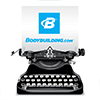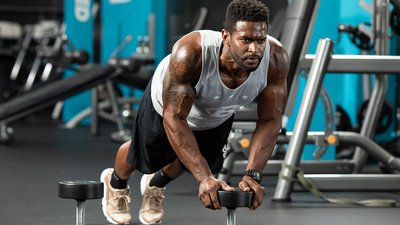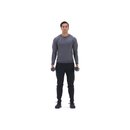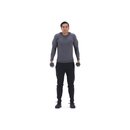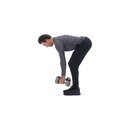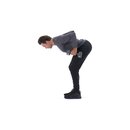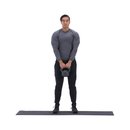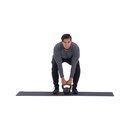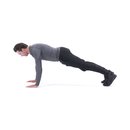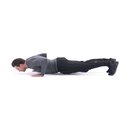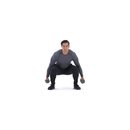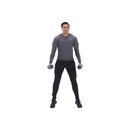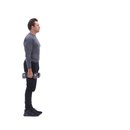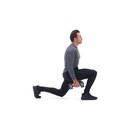Walk into just about any gym and you'll see guys lifting way too much weight, using too much body English and momentum, and just generally trying to impress everybody—especially themselves—with how many plates they can slap on a bar. Rodney Razor saw his share of that when he was just a kid trying to figure out what bodybuilding was all about. The more he lifts, the more he's learned to move slowly and deliberately with the appropriate weight.
In his do-anywhere dumbbell workout, Razor will call out timing for the negative, and sometimes the positive, portion of the lifts. Moving slowly, he says, helps you isolate and focus on the muscles you're targeting. For all these movements (even push-ups), make Razor happy by keeping your core tight, chest up, shoulders back, and back straight.
If you're in a gym with a full dumbbell rack, you can try to dial in the weights for each individual movement, but you don't have to. The workout is designed so that you can use the same weight for all the movements. Use a weight that you can row for 12 solid reps, but that challenges you somewhere between reps 8 and 12. Sure, that's a weight you can probably deadlift a whole bunch of times, but guess what? That's exactly what you're going to do.
The workout could also be performed as a burner of a circuit, but Razor suggests doing it in straight sets to maximize the muscular overload of each move. This is minimalist bodybuilding at its best! Do it when you only have a little time, a little equipment, or a little motivation, but do it!
Technique Tips
Dumbbell Shrug
Start with good posture: back straight, core tight, shoulders back. As you lift up the dumbbells, squeeze your traps like you're just shrugging your shoulders. Squeeze your traps as intensely as you can, and hold the contraction for 1-2 seconds. Release slowly.
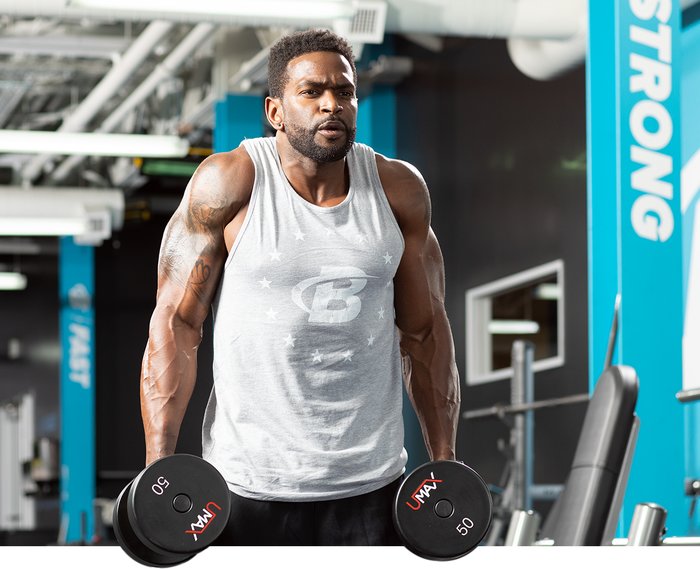
Bent-Over Double Dumbbell Row
Bend your knees to get as low as you can for this exercise. Use your arms to lift the weights chest high, then take 1-2 seconds to lift the dumbbells higher by squeezing your shoulder blades together. Razor says the goal is not to see how high you can pull your elbows, it's to get that long contraction of your shoulder blades.
Squeeze your shoulder blades together, hold for a second, then take 2-4 seconds on the negative to return to the starting position. Keep your chest up, glutes tight, and back straight throughout the exercise.
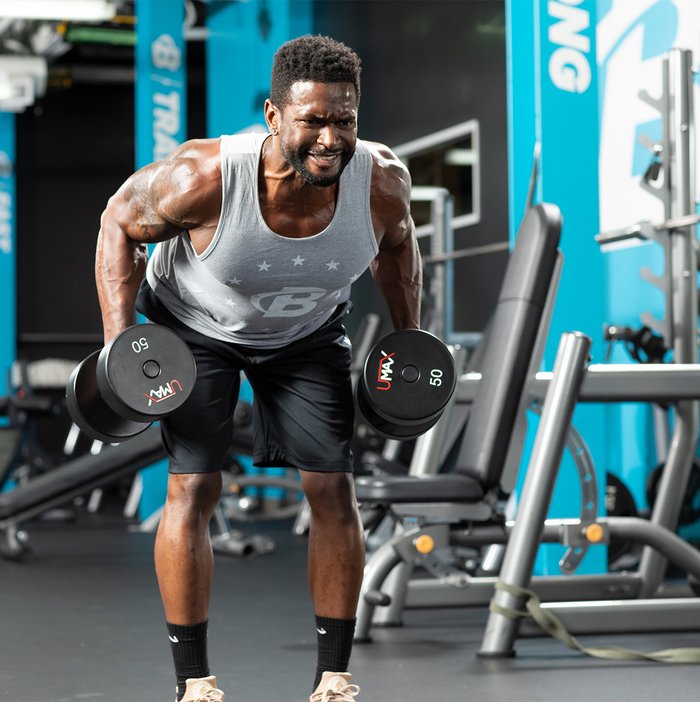
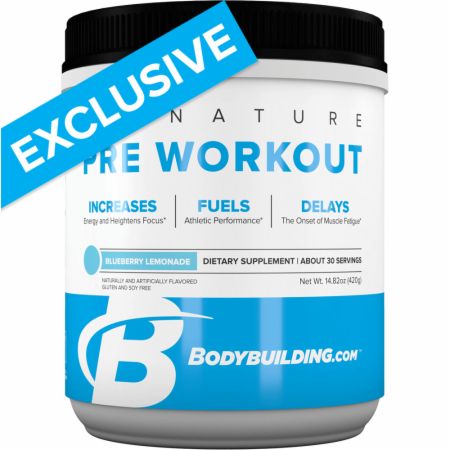
Single-Leg Deadlift
Start from standing and lower the dumbbell until it's at shin level or almost touches the floor, depending on your hip mobility and hamstring flexibility. Only go as far down as you can keep your back neutral, though! At the same time, kick the unweighted foot off the ground and stretch that leg behind you as straight as possible, keeping your back straight and your chest up. When you come up, pull through your glutes and hamstrings.
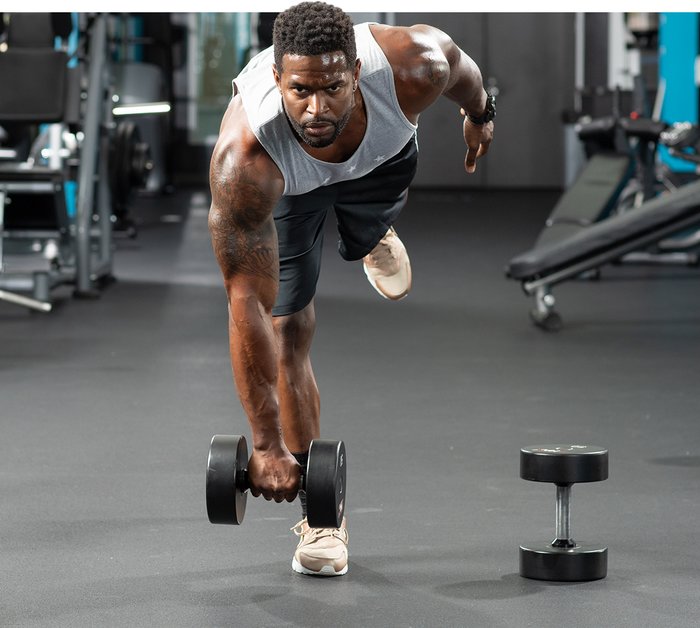
Once again, you'll get the most benefit from this exercise by moving slowly. Razor recommends taking 2-4 seconds both on the way up and the way down. Keep a slight bend in the knee of the weighted leg.
Push-up on Dumbbells
Push-ups on dumbbells may seem more or less the same as push-ups on the floor, but they're not. For one, the weights give you an extra couple of inches of range of motion at minimum—if you choose to use it, that is. That means you can really increase the stretch at the bottom position, and utilize more chest than floor push-ups. Being able to use a neutral grip on dumbbell handles is also a bit more shoulder-friendly for most lifters, potentially allowing them to bust out a few more reps with good form.
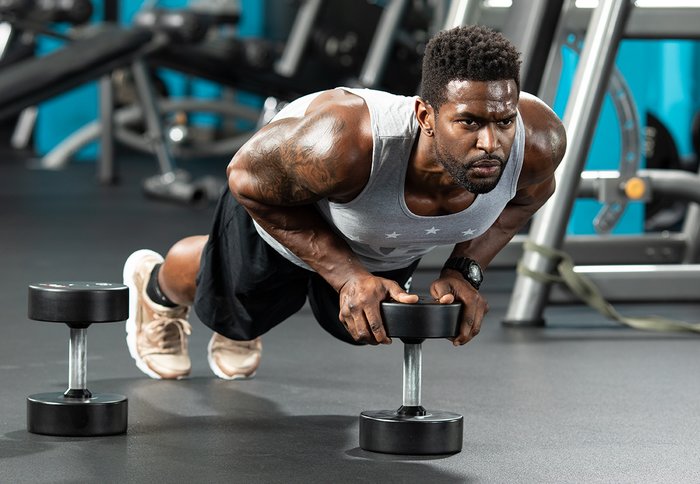
You can position your hands and the dumbbells at whatever position you prefer, changing these positions with every set or workout. To make the exercise more challenging, elevate your feet on a bench or higher. The higher your feet are, the more you'll work your upper chest. Keep your core tight and your elbows in.
Dumbbell Jump Squat
Now things are going to get sweaty.
Hold a single dumbbell with both hands at chest height, as you would for a goblet squat. Bend your knees at least until your thighs are parallel with the floor or slightly lower. As you lower your body, keep your chest up and your shoulders back. Explode into the air, keeping the dumbbell in the same position relative to your body. When you land, Razor says, use your toes, your knees, and then your legs to absorb the impact and move immediately back into the squatting position. If you've done your landing right, it should barely make a sound.
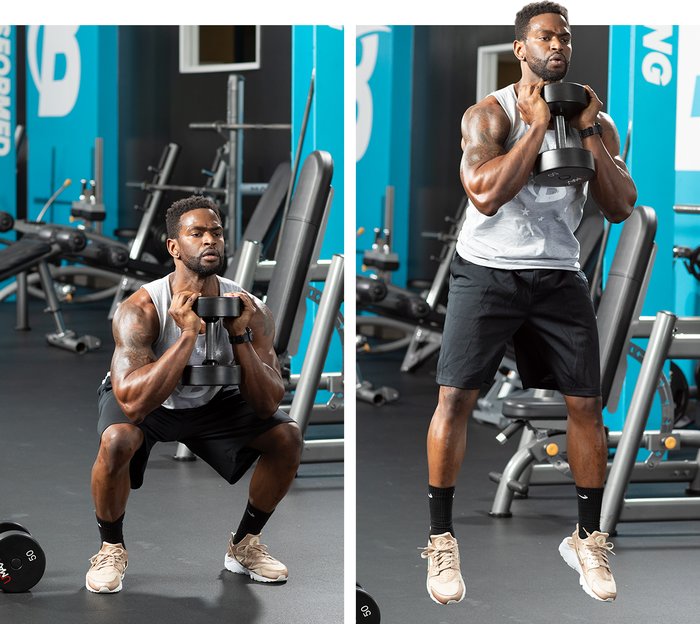
No need to count reps here; just watch or listen to the clock. Even with a light weight, your quads and lungs should be burning after a couple of 30-second sets.
Dumbbell Walking Lunge
You know Razor's drill by now: chest up, shoulders back, core tight. Holding the dumbbells by your side, take an exaggerated step forward, drive though the heel of your front foot, and lower your knee as close to the floor as you can. As you bend your forward leg, protect your knee by stopping before it goes past the toes of that foot.
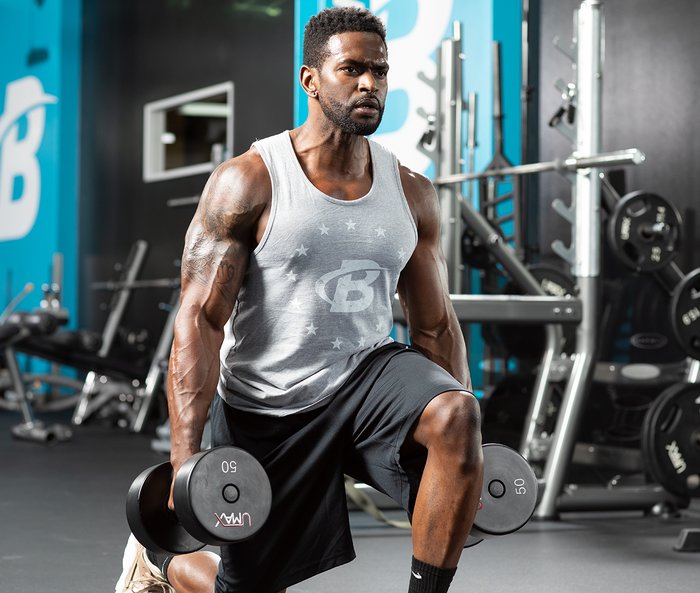
Find a controlled pace, and start stepping! After 30 seconds, you may be feeling fine, but after 4 rounds of 30 seconds, you should be cooked—and you should have a new respect for those bells.
